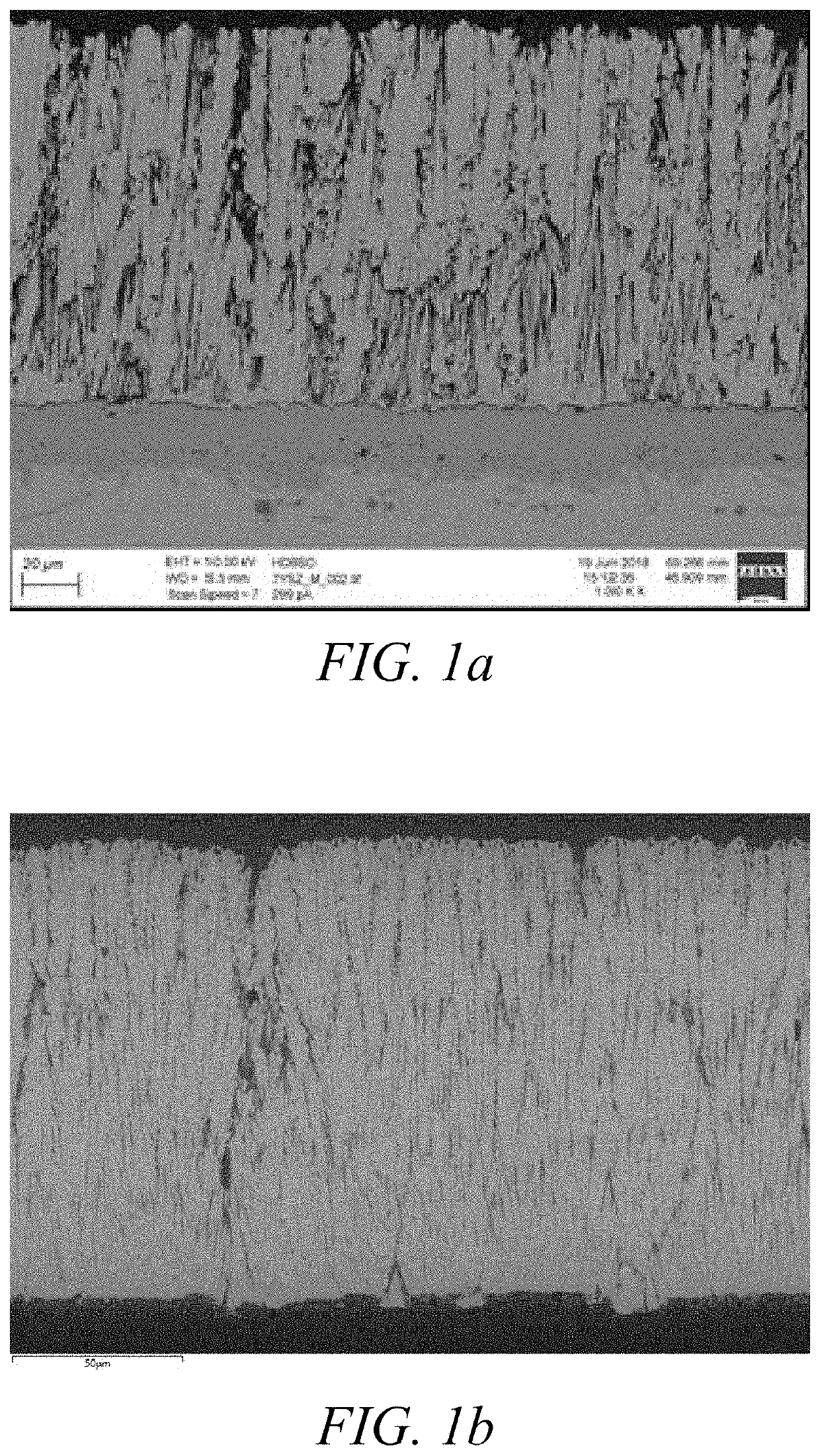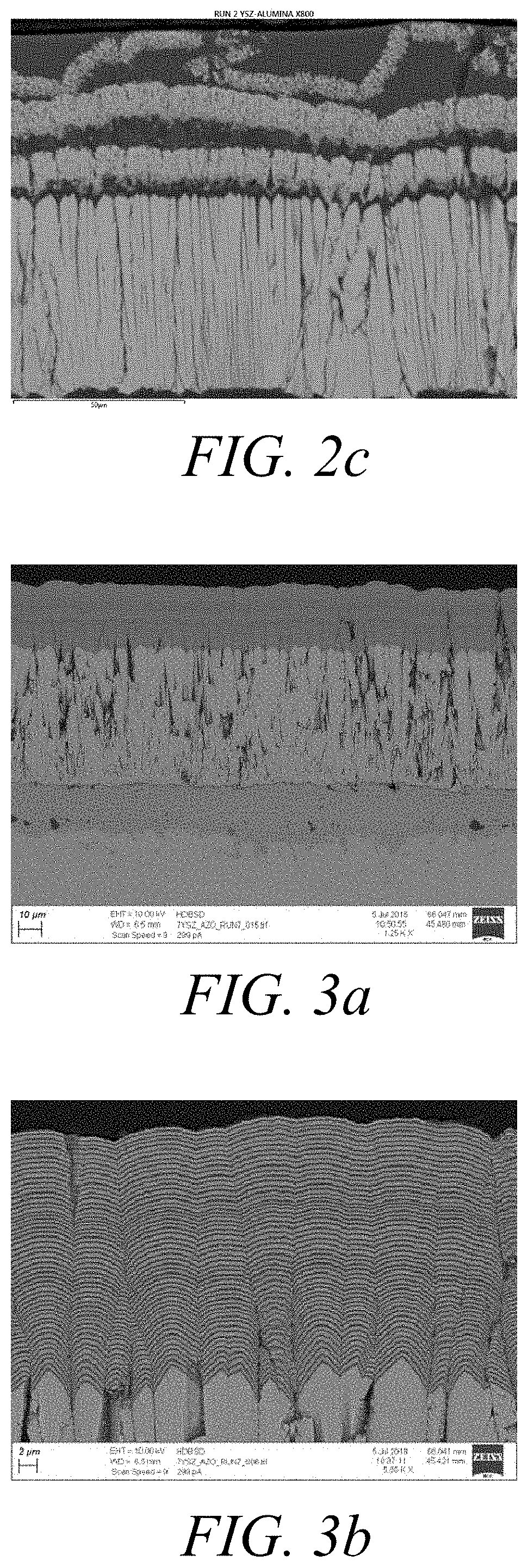Thermal barrier coating
a technology of thermal barrier coating and coating material, which is applied in the direction of superimposed coating process, machines/engines, mechanical equipment, etc., can solve the problems of reducing the coating strain/stress tolerance, reducing the thermal protection provided to the component, and ultimately delamination of the thermal barrier coating material, so as to reduce the manufacturing time and cost of the component, and the process of forming the coating is simple.
- Summary
- Abstract
- Description
- Claims
- Application Information
AI Technical Summary
Benefits of technology
Problems solved by technology
Method used
Image
Examples
Embodiment Construction
[0072]First, a comparative sample was prepared using a metallic nickel-based substrate which was treated by grit-blasting using #220 brown alumina and subsequently coated with an aluminide bond coat layer.
[0073]A ceramic layer having a columnar grain structure, a thickness of 135 microns and comprising 7-9 wt % yttria-stabilised zirconia (7YSZ) was deposited on the substrate using electron beam-physical vapour deposition (EB-PVD) at a temperature of 980° C., a power of 36 kW and a chamber pressure of 6×10−3 mbar.
[0074]The resulting columnar ceramic layer is shown in FIG. 1a. The columnar grain structure is clearly visible with the ceramic layer comprising multiple parallel columns extending away perpendicularly to the surface of the substrate, the columns spaced by inter-columnar gaps. These gaps provide for thermal stress / strain tolerances by allowing independent movement of the columns.
[0075]Next, the CMAS resistance of the sample was tested by using an air spray gun to deposit an...
PUM
| Property | Measurement | Unit |
|---|---|---|
| thickness | aaaaa | aaaaa |
| thickness | aaaaa | aaaaa |
| thickness | aaaaa | aaaaa |
Abstract
Description
Claims
Application Information
 Login to View More
Login to View More - R&D
- Intellectual Property
- Life Sciences
- Materials
- Tech Scout
- Unparalleled Data Quality
- Higher Quality Content
- 60% Fewer Hallucinations
Browse by: Latest US Patents, China's latest patents, Technical Efficacy Thesaurus, Application Domain, Technology Topic, Popular Technical Reports.
© 2025 PatSnap. All rights reserved.Legal|Privacy policy|Modern Slavery Act Transparency Statement|Sitemap|About US| Contact US: help@patsnap.com



